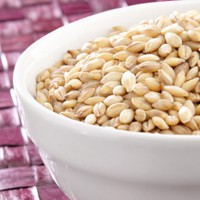on Jan 12, 2015 in Nutrition, Weight Loss, Wellness Blog
SAY NO TO CANNED FOODS WITH BPA – Biphenyl-A or BPA is a powerful environmental toxin that has been shown to alter endocrine function. It disrupts the hormonal balance in our body which regulates body weight. The altered hormonal balance leads to lowered body metabolism, increased fat cell production, increased appetite, and weight gain. BPA has also been clearly linked to cancer and diabetes. The levels of the chemical – used to protect canned food from corrosion and bacteria – are surprisingly high in the canned goods found on our kitchen shelves. To reach this conclusion, 50 different cans of food were collected from pantries in 19 states and Ontario and were analyzed at a top food safety lab in San Francisco. BPA was found in 92 percent of the samples according to a 24-page study called No Silver Lining, which was released today by the National Workgroup for Safe Markets. The highest level of BPA was 1,140 parts per billion – believed to be the highest ever found in the U.S. It was detected in Del Monte French Style Green Beans from a pantry in Wisconsin, the report said. Other high scorers included Walmart’s Great Value Green Peas from a store in Kentucky, and Healthy Choice Old Fashioned Chicken Noodle Soup from a pantry in Montana, said researchers from the coalition of more than 17 public and environmental health organizations . Hundreds of studies – by both government and academic researchers – have shown that exposure of animals to low doses of BPA has been linked to cancer, abnormal behavior, diabetes and heart disease, infertility, developmental and reproductive harm, obesity, and early puberty, and is a known risk factor for breast cancer. Also, BPA exposure is particularly of concern for pregnant women, for babies, and for children. “It takes as little as one serving of canned foods to expose a person to levels of BPA that have been shown to cause harm in laboratory animals. This is especially troublesome if the person eating the canned foods is pregnant, because fetuses are especially vulnerable to BPA’s effects,” reports co-author Bobbi Chase Wilding, organizing director of Clean New York, told AOL News. The researchers warned that in addition to the risk...
Read More
on Jan 8, 2015 in Fitness, Inspiration, Nutrition, Patient Testimonials, Weight Loss, Wellness Blog
When you feel like quitting think about why you started! Kim and her husband lost a total of 230 lbs together in our Full Fasting Program. She continues to eat clean and exercise, way to go...
Read More
on Jan 5, 2015 in Fitness, Nutrition, Weight Loss, Wellness Blog
Healthy Balance – Weight Management and Healthy Living Program Convenient, affordable, and led by experts, the Healthy Balance Program is based on three basic ideas for success: Healthy Eating, Daily Habits, and Physical Activity. Programs are offered weekly. Start whenever you’re ready and stay as long as you want. Program has a $50 one-time materials fee and then the program is $10 a session. Programs typically run in 14-week cycles. Focus is on developing healthy eating habits, healthy lifestyle habits, an active lifestyle, and mindful eating. Programs offered in Clairemont Mesa, La Mesa, Otay Mesa, and San Marcos Kaiser Permanente Medical Office buildings. Call to enroll: (858)...
Read More
on Dec 17, 2014 in Nutrition, Weight Loss, Wellness Blog
How many years have we heard that chicken is a better choice than beef because it is lower in saturated fat? Well it seems that when it comes to chicken things have changed. Studies that track foods to weight gain clearly indicate that meat eaters compared to vegans have higher BMIs (Body Mass Index – an indicator of obesity). When looking specifically at different types of meat, numerous studies indicated that the food most highly connected to elevated BMI was chicken! What happened to chicken? Well for one thing, over the last 30 years chickens have been selectively bred to be intense growers (grow quickly to maturity). Chickens that mature quickly mean improved profits for poultry growers, but the unexpected outcome of selective breeding/feeding is drastic consequences in the nutritional value of chicken. Today’s chickens have a lot more fat and less nutritional value. A serving of chicken in 1940 had 95 calories and 10 grams of fat, a serving of chicken in 2011 contains 200 calories and 23 grams of fat. The selective breeding has also had an impact of how well the chicken is able to make a very important fat called DHA (Docosahexaenoic Acid). DHA is an omega-3 fat that is extremely important to brain and eye health for humans. These new breeds of chicken are not able to make DHA in their muscle tissue like old chickens. They are so much lower in DHA that it would take eating 6 current day chickens (about 9000 more calories worth of chicken) to equal the DHA level in one chicken form 1970! Some researchers have theorized that this drastic decrease in omega-3 DHA could be one reason that there has been such a dramatic increase in Alzheimer’s and other mental health disease over the last 20...
Read More
on Aug 6, 2014 in Nutrition, Weight Loss, Wellness Blog
Cooking With Barley Traditionally American diet’s are rich in wheat. But the wheat grown now is genetically different from the wheat our grandparents ate because it has been genetically modified over the last two decades. These newer strains of wheat are not as widely tolerated and have increased the incidence of wheat allergies and gluten-intolerance. It is estimated that as high as 40% of the population has some reaction to wheat, which leaves many of us looking for alternative healthy grain sources. One great alternative is Barley, a staple of soups and stews. Barley is the oldest known domesticated grain, grown for 10,000 years as food for humans and animals, and as the basis of the first alcoholic beverages. Like millet, barley comes in hulled and pearled varieties; hulled barley is the true whole-grain form, with only the outermost hull removed, whereas pearled barley is polished to remove the bran layer and often the inner endosperm layer as well.Pearled barley is both easier to find and the type called for in most recipes. To use hulled barley (which you can find in health food stores) in place of the pearled variety in any recipe, increase the cooking time. Barley is an excellent source of fiber (one cup cooked containing 13 grams); its insoluble fiber helps maintain large populations of friendly bacteria in the digestive tract. Additionally, barley has been shown to aid in regulating blood sugar after meals (more so than other grains of similar glycemic index, like wheat) for up to 10 hours, most likely thanks to the colonic fermentation of barley’s indigestible carbohydrates. This finding is good news for diabetics and others concerned with their blood glucose levels. Like wheat and rye, barley is a gluten grain and is therefore unsuitable for those with celiac disease or gluten intolerance. Cooking time: pearled, 45-60 minutes; hulled, 90 minutes Liquid per cup of grain: 3 cups How to cook barley: Combine barley and water in a pot and bring to a boil. Reduce heat, cover and simmer until...
Read More





